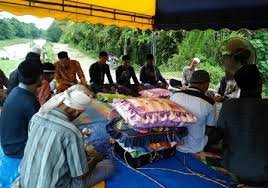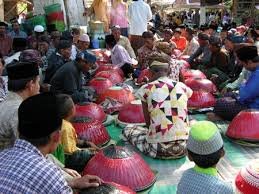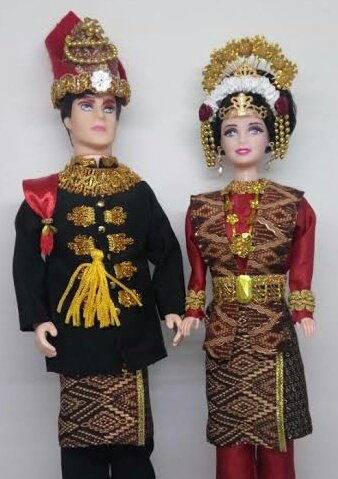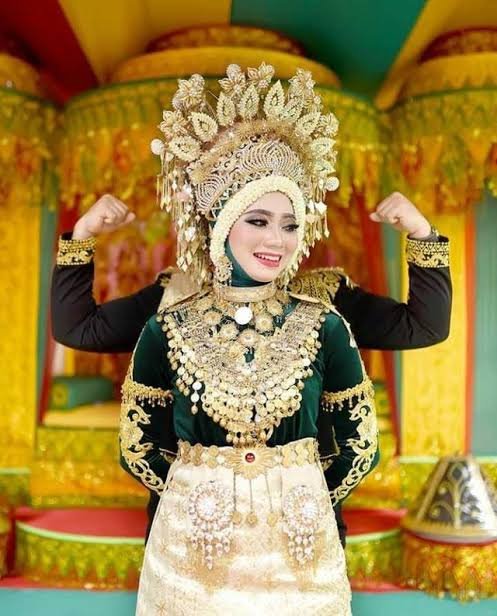Aceh is a province in Indonesia whose capital city is Banda Aceh. Aceh is one of the provinces in Indonesia that has been given the status of a special region and is also given special autonomy authority. Aceh is located on the northern tip of the island of Sumatra and is the westernmost province in Indonesia. According to the results of the 2020 Central Bureau of Statistics census, the population of this province is around 5,459,891 people. It is close to the Andaman and Nicobar Islands in India and is separated by the Andaman Sea. Aceh is bordered by the Bay of Bengal to the north, the Indian Ocean to the west, the Strait of Malacca to the east, and North Sumatra to the southeast and south.The hive application has drugged my heart to get even more enthusiastic about working because the past few posts were very satisfying, so from that tonight I will make a spectacular post from @hive-acehnes with a discussion of Aceh and its ins and outs.
Talking about Aceh, it is incomplete if we do not discuss the famous mosques in the city of Banda Aceh Baiturrahman Grand Mosque is a mosque located in the center of Banda Aceh, Aceh Province, Indonesia. Baiturrahman Grand Mosque is a symbol of religion, culture, spirit, strength, struggle and nationalism of the Acehnese people. This mosque has been a landmark in Banda Aceh since the era of the Aceh Sultanate and survived the tsunami disaster on December 26, 2004.


Nanggroe Aceh Darussalam Province is a province located at the tip of Sumatra Island. In this province, there are 13 ethnic groups and 11 regional languages. The majority of the population is Muslim and it is no wonder that the province is nicknamed the Veranda of Mecca. Customary culture or traditions there are certainly inseparable from Islamic cultures. Here are six traditional traditions of the Acehnese people with Islamic nuances.
- Peutron Aneuk
Peutron Aneuk is a tradition of the Acehnese people to welcome the birth of a baby. This tradition is usually held after the child is 44 days, 3 months, 5 months, up to 7 months old. The local community believes that babies who have not followed this tradition are better off not leaving the house first. This tradition will be led by religious leaders beside Zamzam water, palm juice, roasted chicken, and fruits. After reciting the prayers, the baby will taste various kinds of flavors on his tongue with the aim that his senses are more sensitive.

- Jak ba tanda
The Jak ba Tanda tradition is a continuation of the application process which is commonly known as Ba Ranup. If the application is accepted, the man's family will hold a peukong haba or talk about the meugatib or when the wedding will take place, how many guests will be invited, to the type and number of dowries. In this tradition, the man's family will deliver Acehnese specialties such as buleukat kuneeng, fruits, and jewelry. This tradition itself is believed to have been influenced by customs originating from Arabia and India.

- Meugang
Meugang or Makmeugang is a tradition that takes place 3 times a year. This tradition itself is synonymous with the tradition of eating beef and buffalo. You can find this tradition ahead of the month of Ramadan, Idul Fitri, and Eid al-Adha. Meugang itself is a forum to strengthen kinship in an Islamic context. Usually the nomads will return to their respective areas to celebrate this tradition with their families.


- Tulak Bala
The Tulak Bala tradition is a tradition of the Acehnese people which is held once a year, to be precise in the month of Safar. According to community stories, some residents believe that the month of Safar is synonymous with transitional or erratic weather and has a bad aura.
This tradition is marked by residents flocking to beaches, rivers, or other places, to simply hold prayers and eat together. The essence of this tradition is prayer together led by a teungku. In some areas there are also flower bath activities with the aim of removing all negative aura.


- Peusijuek
The Peusijuek tradition is usually carried out in a series of other traditional traditions such as weddings, thanksgiving, and others. Literally, the word "Peusijuek" is taken from the word sijue which means "cold".
This tradition is expected to provide safety, serenity and blessings. In essence, this tradition is an expression of gratitude and asking for protection by Him. The tool or material that is always there in the Peusijuek tradition is the dalong which serves as a place to put the ingredients for this tradition.


- Khanduri Pang Ulee
As a celebration of the Prophet's birthday, the people of Aceh have a fairly distinctive tradition, namely Khanduri Pang Ulee. Before the event, the mothers will prepare food or cakes to be brought to the mosque or the field.
Each mat has the name of the village attached and guests can sit according to the name of the village. What's interesting about this event is that if the food served is left over, visitors must take the leftovers home.
So, those are the six traditional traditions of the Acehnese people that are closely related to Islam.


Hearing the name Aceh is also unusual if I don't discuss Acehnese traditional houses.
Aceh House or better known as "Rumoh Aceh" is the traditional house of the Acehnese tribe. This house is a stilt house type with 3 main charts and 1 additional section. The three main parts of the Aceh house are seuramoë keuë (front porch), seuramoë teungoh (middle porch) and seuramoë likôt (back porch). While 1 additional part is rumoh dapu (kitchen house).





The roof of the house serves as a storage area for family heirlooms. Rumoh Aceh inside the Aceh Museum Complex in the old town of Banda Aceh. Rumoh Aceh at the Aceh Museum with Donya Cakra Bells in the yard area. This photo was taken by Dutch soldiers in Banda Aceh around the early 20th century when the Sultan of Aceh was still in power. For the Acehnese ethnic group, everything they will do, is always based on traditional books. The customary book is known as Meukeuta Alam. One of the contents inside is about the construction of a house. In the customary book it states: "Every citizen builds a house or mosque or halls or meunasah. On each pillar above, a little red and white cloth should be worn". The red and white cloth specially made when starting the work was wrapped around the main pillar which was called tamèh raja and tamèh putroë ”. therefore it appears that the Acehnese are not a tribe that forgets what their ancestors have inherited.
Talking about Aceh is also incomplete if you don't discuss traditional clothing from this area. Aceh also has traditional clothes that symbolize the typical Aceh region or known as ulee balang. Ulee Balang That is the name of Acehnese traditional clothing. This form of clothing is influenced by Malay and Islamic culture. Initially, Acehnese traditional clothing always used raw materials from fabrics that were woven by themselves, either from silk or from cotton.
These materials will later be used to make waist cloth (ija waist), headband (tangkulok), sirih wrapping cloth (bungkoih ranub), women's trousers (siluweue inong), shawl cloth (ija sawak), which are in accordance with how to wear them too. called ija tob ulee (head cover), ija slendang (shawl), ija seulimbot (blanket), stomach cloth (ija lambong), which is a cloth that is folded in three lengthwise so that it can cover part of the body. This Acehnese traditional clothing was originally only used by the royal family. But now, the use of traditional clothing is growing and is used as traditional Acehnese clothing.
There are two names in Ulee Balang traditional clothing, namely Linto Baro for clothing for men, and Daro Baro which is traditional clothing for women.
1 .Linto Baro
Linto Baro is a custom clothing specially designed for men. In Linto Baro clothing, there are three parts, namely top, middle, and bottom, accompanied by traditional weapons as a complement to traditional clothing. At the top there is a meukeutop. This object is oval upwards and functions as a head covering like a crown. Meukeutop is also equipped with a loop called a tengkulok, which is made of silk, and has an octagonal star-shaped pattern.

- Dara Baro
As for women, Acehnese traditional clothing is known as Daro Baro. In contrast to Linto Baro's clothes for men who are predominantly black, Daro Baro is actually decorated with various colors, such as green, yellow, red, and purple. In addition, the traditional Daro Baro clothing also has many accessories in the form of jewelry to complement it. For the clothes, namely the kurung shirt, it is designed based on the influence of Arabic, Malay and Chinese culture, so that it looks loose.
This design aims to cover the curves of a woman's body. Clothes for women have the same basic material as those used by men, which are made of woven silk threads with a motif of gold thread. The use of these brackets will be equipped with a songket sarong, which serves to cover the woman's hips.
This songket will be tied using a waist strap made of silver or gold, which is called Taloe Ki leng Patah Sikureueng. Meanwhile, on the neck or collar, there is a typical Acehnese woman's jewelry called Boh Dokma. The women also wear sable or Sileuweu check pants. But the difference is, women's trousers are more diverse in color than men's. Then for the jewelery, the women will be equipped with various jewelery, such as Patam Dhoe, which is jewelry in the form of a crown, Subang or earrings, and Taloe Tokoe Bieung Meuih, which is jewelry in the form of a necklace. On Patam Dhoe, there is a calligraphy writing with the inscriptions of Allah and Muhammad in the middle, which is surrounded by flower motifs and circles.


This motif is also called Bungoh Kalimah by the people of Aceh. This crown is proof that the woman is married and has become the responsibility of her husband. Not only in the crown, the unique jewelry in Acehnese traditional clothing is also found in Taloe Tokoe Bieung Meuih or jewelry in the form of a necklace, where the gold necklace has six heart-shaped stones and one in the shape of a crab.
Thank you for coming to my post, I hope you are entertained and become information about Aceh to the whole world
Support @hive-acehnes
